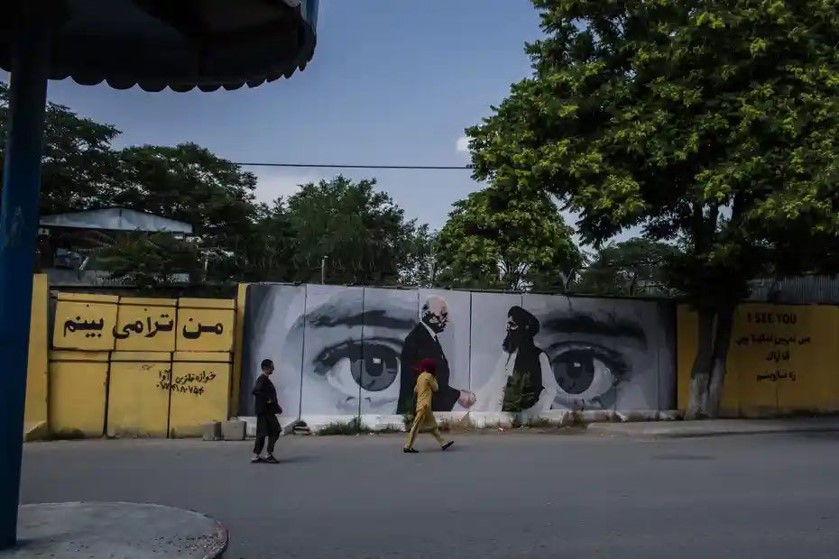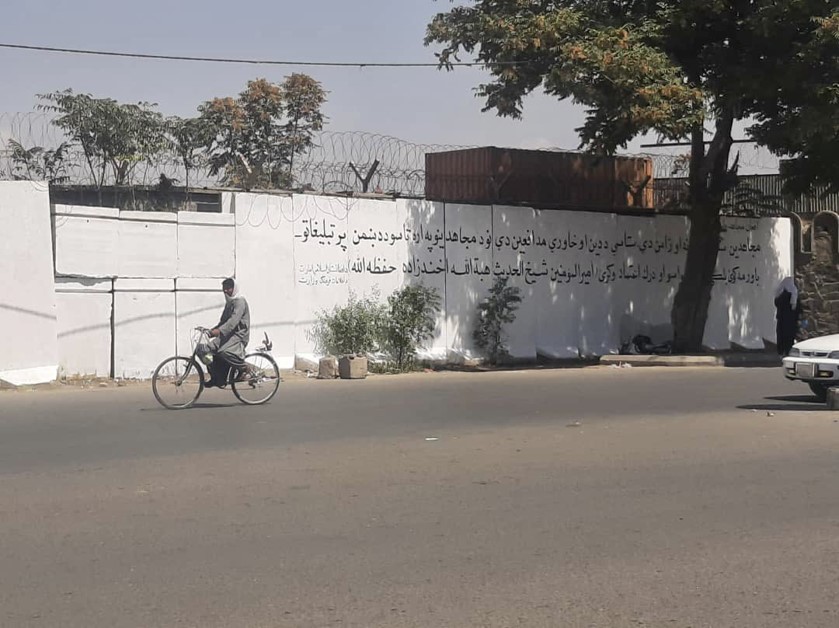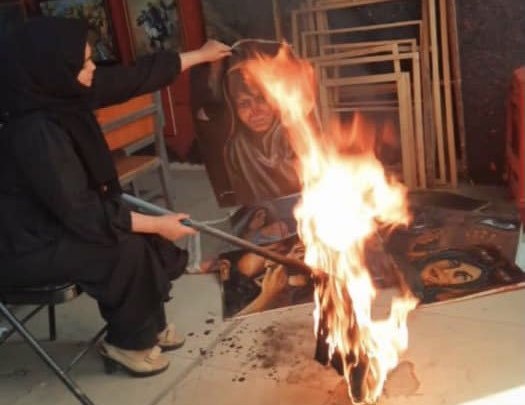Artistic freedom is a fundamental right but more threatened than ever in Europe and across the world according to a new report published by Freemuse in beginning of September.
Freemuse, an international organisation founded in 1998 with headquarters in Copenhagen, monitors artistic freedom and publishes annual reports on it state. Artistic freedom falls under the broad remit of freedom of expression and is a fundamental human right, protected in several international and European conventions.
The new report is based on an analysis of 1251 acts of violation against artistic freedom in 103 countries and in the online space in 2021. A record number of 39 artists were killed in 2021 and more than 500 artists faced legal consequences for challenging the authorities, public figures, and religious and traditional values.
The report consists of two parts. The first part shows the “big picture” in the form of statistical graphs with a breakdown of the figures. In the second part, Freemuse looks into a number of countries of concern during 2021: Afghanistan, Belarus, Israel/Palestine, Myanmar and Yemen.
The outbreak of violations of artistic freedom in these countries were among others due to specific events in 2021 such as the coup in Myanmar in February, the Israel-Hamas war and the riots in mixed Israeli cities in May, the Taliban take-over of Afghanistan in August, and the post-election suppression of protests in Belarus.
“2021 was a year of violence and tragedy of an extent not recently seen,” says Norwegian film director and human rights defender Sverre Pedersen, chair of Freemuse. If the underlying causes of on-going conflicts are not solved, the situation for art and artists will continue to be profoundly serious in these and other countries, including Russia and China.
However, the report mentions more countries of particular concern: Brazil, China, Egypt, France, Indonesia, India, Iran, Lebanon, Nigeria, Russia, Turkey, the US and Zimbabwe. The high number of cases in France, the only EU country in the list, is because of the Covid-19 restrictions, fundamentalism and anti-terrorism legislation, he told The Brussels Times.
Even before its invasion of Ukraine on 24 February 2022, Russia was on second place in Europe as regards violations of artistic freedom. Have you followed up the situation in Russia since then?
“We are trying to monitor the situation in Russia and Ukraine as much as possible, but because of the war and especially that the free press in Russia is closed down, it’s difficult to have a good overview of the current situation there. But we continue to have contact with Russian artists both inside and outside Russia.”
Turkey prosecuted more artists than any other country in 2021 and ranks second on the number of imprisoned artists but there is no separate chapter on the country. Why?
“The picture that emerges through our monitoring and documentation in Turkey is especially important and relevant for other countries where a minority is subjected to systematic oppression and persecution. In Turkey, every statement in support of the Kurdish minority is considered as glorification of terrorism, regardless of from where it comes.”
He underlined that Turkey has developed in an increasingly authoritarian direction. “It’s now also forbidden to criticize the president or to express oneself negatively about Islam. LGBTIQ artists are also very vulnerable in the country, as they are unfortunately in many countries, also in Europe.”
“We see the same in China, where it is forbidden to speak out in support of the people of Tibet or the Uighurs in Xingjian. We see it also in Spain's treatment of artists who support increased autonomy for Catalonia. Just to name a few of the places in the world where it is dangerous to support minorities even in art”.
Freemuse includes in its analysis cases where artists used their artistic expression to support demonstrations and public protests. For the first time, it also includes artists who took part in anti-government demonstrations and who were targeted as part of a broader crackdown on the protest movement.
About half of the 253 artists recorded as detained in 2021 were held for non-artistic work, such as expressing their views about political and social issues both offline and online, while the rest were targeted for the content of their artistic work. More than 60 % of the artists who were prosecuted (133 in total) and imprisoned (119) were targeted because of their artistic work.
Should cases concerning artists who were persecuted because of their participation in anti-government protests be treated separately?
Sverre Pedersen admitted that it was a problem in the analysis. “Formally speaking, we’ll always try to distinguish between violations that are indisputably linked to artistic expressions or works of art in themselves. However, in a number of countries we see that the police and authorities deliberately go after artists in relation to anti-government demonstrations and protests.”
He says that there are strong indications that well-known artists are specifically targeted in such anti-government demonstrations and protests. These are regimes fearing the artists and their expression of criticisms, and therefore they have instructed the police that they should to be dealt with particularly hard.
It therefore becomes complicated to decide that this type of attack on artists should not be counted in the statistics on violations of artistic freedom of expression.
“But I can promise that we always discuss in detail whether an incident actually warrants in inclusion in our documentation. And we actually choose not to count a good number of cases where it’s not possible to document that they have anything to do with their status as artists.”
What explains the high number of killed artists in Columbia (11) and Mexico (8) and the two artists killed in the US?
“Most killings occurred during public rallies that were met with police brutality,” he explains. “Columbia and Mexico are unfortunately two countries with a lot of violence. In Colombia you have death squads that attack people they don't like just because of what they say and express. The years of civil war has led to widespread use of violence and murder.”
“In Mexico a lot of murders are connected to the drug mafia. And these too attack people who express themselves critically of the mafia and their actions. Unfortunately, it has been shown that in several parts of Mexico that there are close relationships between the police, politicians and the mafia. It poses a significant threat to free speech.”
As regards the US, the explanation as to why artists are also increasingly censored, harassed and, in the worst case, killed is complicated, he says.
“But it’s in any case partly connected with the increased polarization in American society. In countries where hate rhetoric, racism and prejudice are given more space in the public discourse and especially where prominent politicians spread fake news and prejudices against ‘the others’, there is unfortunately also an increase in violence against them, including artists.”
There are travel bans against 13 artists in 4 countries. Could you give some examples?
“Travel bans unfortunately affects to a large extent artists from countries that people in the West don’t like,” he replied. “I was recently at a concert in Norway where a Palestinian musician was supposed to perform but she wasn’t granted visa to Norway, without any explanation given. In Germany, artists who are supporting the boycott movement (BDS) against Israel are risking travel bans.”

Doha Deal mural created by ArtLords in Kabul was painted over by Taliban. Credit: Omaid Sharifi on Twitter (Freemuse)
127 artworks and venues were destroyed in 33 countries. Could you give a few examples of artworks that were destroyed and why?
“Let me start with a kind of paradox,” Sverre Pedersen replied. “After the Taliban return to power, they destroyed a lot of art and musical instruments, but artists themselves have also destroyed their instruments and artworks because they are so afraid that Taliban will discover that that they are artists and musicians.”
He says that that in many countries, murals are destroyed simply because they are expressing something that authorities, fundamentalists or far-right persons do not like. The destructions are carried out by both governments and public bodies, and individuals or private groups.

After the Taliban take over
In a previous report in 2020, which focused on Europe, Freemuse referred to the UNESCO Convention for the protection and Promotion of the Diversity of Cultural Expressions. The convention has been ratified by all EU Member states and obliges them to report on the state of artistic freedom and measures taken to promote and protect this right.
What is the quality of their reporting and could it be used as input to Freemuse’s annual reports?
Sverre Pedersen says that the reporting – which is required only every four years - is not very useful in terms of statistics. “However, the reporting shows the huge difference between their own descriptions and the real situation,” he added.
“Even the most repressive country would mention constitutional protection for freedom of speech and art. What we need is that civil society organisations increasingly make their own analysis, combine this with the country reports and then submit it to the United Nations Human Rights Council and its mechanism of periodic reviews. This mechanism is still the strongest one in terms of ‘condemnation’.
Europe accounted for 32 % of all reported violations of artistic freedom in the world in 2021 which is more than in other continents. Has the situation in Europe deteriorated because of the emergency measures put into place during the COVID-19 crisis?
“Firstly, it is important to emphasize that what Freemuse is able to document is only the tip of the iceberg,” Pedersen replied. “Secondly, it’s easier to document violations of artistic freedom in Europe simply because we have a freer and more open press. Freemuse has also fewer language challenges than in many other parts of world.”
Having said that, he confirmed that the situation in Europe and in many other parts of the world is going in a negative direction when it comes to artistic freedom of expression in particular and human rights in general. “It is unfortunately also a fact that many countries used the Covid-19 pandemic to restrict the space for free speech and consequently also artistic freedom.”
The pattern in some countries is that artistic freedom is restricted by the use of all possible means such as censorship, blasphemy and defamation legislation, anti-terrorism measures, public health lockdowns, and incitement against LGBTIQ people.
Censorship is still the most common form of suppression of artistic freedom. Is this mainly a phenomenon in dictatorships and authoritarian or fundamentalist countries or is it also common in democracies?
“Unfortunately, our monitoring and documentation shows that censorship happens in all kinds of regime and political systems. We have for example a growing tendency where Facebook, Instagram and Google are censoring content on the internet that they believe is indecent or runs against social norms.”
“We have countries like Spain where it’s forbidden to criticize the church and the royals and where artistic expressions doing so are censored. In some countries, especially in Turkey but also in Israel, censorship is justified by anti-terrorism legislation.”
In fact, ever since the illegal referendum in Catalonia, a number of artists have been sentenced to prison terms in Spain for supporting ‘separatism’. Spain was the only EU Member State where an artist was imprisoned in 2021.
“Overall, music is the most suppressed art form. The arrest of the rapper Pablo Hasél in February 2021, who had been convicted of glorifying terrorism and insulting the monarchy in his lyrics, shows that Spain has a problem with freedom of expression.” Another rapper, known as Valtònyc, who wrote a rap song about the Spanish king and was sentenced to prison, fled to Belgium in 2018.”
Freemuse’s previous report in 2020 ended with a number of recommendations towards a new agenda on artistic freedom which still is relevant. The exercise of freedom of expression may be subject to restrictions on certain grounds prescribed by law. Any restrictions should be in line with strict international human rights standards and must be necessary and proportional for the protection of a legitimate aim.
M. Apelblat
The Brussels Times

